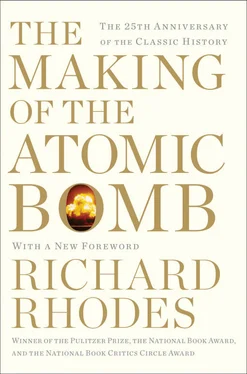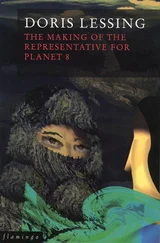At his coronation in 1856, amid remissions and amnesties, Czar Alexander II abolished the special conscription of Jewish children. Other alleviations followed, all designed to encourage Jewish assimilation. “Useful” Jews—wealthy merchants, university graduates, craftsmen and medical assistants—were allowed residence in the interior of Russia, beyond the Pale. The universities were restored to autonomy and Jews allowed to attend. Within the Pale Jews received limited civil rights and became eligible for local councils. But the Czar who freed 30 million peasants from serfdom was dismayed to discover that reform after so many centuries of repression might lead not to expressions of gratitude but to revolutionary agitation and revolt, as it did in Congress Poland in 1863, and the liberalization of Russian life stalled.
Revolutionaries—a splinter group that called itself “The People’s Will”—murdered Alexander on March 13, 1881, by lobbing a hail of small bombs into his open carriage in broad daylight on a main street of St. Petersburg as he drove home from reviewing the Imperial Guards. One member of The People’s Will, not a bomber, was Jewish; that was pretext enough, in the confused aftermath of regicide, to blame the assassination on the Jews. A wave of pogroms—the curious Russian word refers to a violent riot by one group against another—began that continued until 1884. “Jewish disorders,” the dogmatic new Czar, Alexander III, called these murderous raids of drunken mobs on Jewish quarters everywhere in the Pale. 658They erupted with the active participation or tacit consent of the authorities. More than two hundred Jewish communities were attacked. The first wave of pogroms—there would be more in later decades—left 20,000 Jews homeless and 100,000 ruined. 659Women were raped, families murdered. The government blamed the violence on anarchists and moved to expel even the “useful” Jews back into the ghettos of the Pale.
With the pogroms came the 1882 May Laws, revising or repealing previous reforms and imposing catastrophic new restrictions. Between 1881 and 1900 more than 1 million Jews emigrated from Russia and central Europe to the United States and another 1.5 million between 1900 and 1920. A much smaller number of emigrants, like Chaim Weizmann, chose Western Europe and England. Most found less opportunity there than their American counterparts and more virulent anti-Semitism.
One of the important sources of German anti-Semitism in the years after the Great War was the strange forgery known as The Protocols of the Elders of Zion . Adolf Hitler took the Protocols as a text, to the extent that National Socialism had a text, for world domination. “I have read The Protocols of the Elders of Zion” Hitler told one of his loyalists; “it simply appalled me. The stealthiness of the enemy, and his ubiquity! I saw at once that we must copy it—in our own way, of course.” 660Heinrich Himmler confirmed that connection: “We owe the art of government to the Jews.” To the Protocols, he meant, which “the Führer learned by heart.” 661
The Protocols were Russian work. They link the Jewish experience in Russia with the Jewish experience in Germany, where so few Jews actually lived—only about 500,000 in 1933, less than 1 percent of the German population. If Russia’s hostility to the Jews was rooted in part in religious conflict, German anti-Semitism, by contrast, needed a secular myth. A half-educated apostate autodidact like Hitler especially needed some structure on which to hang his anti-Semitic pathology. German anti-Semitism had plentiful German antecedents—Richard Wagner’s foamings were high on Hitler’s list—but the Protocols happened to arrive at the right time and place to earn a prominent position well forward. In the 1920s and 1930s millions of copies of various translations and editions were sold throughout the world.
The book is cast in the form of lectures and begins in midsentence, its scene unset, as if torn from the evil hands of its perpetrators. To supply the missing background, editors usually bound in explanatory material. A popular preliminary was a chapter from the novel Biarritz, the work of a minor German postal official, entitled “In the Jewish Cemetery in Prague.” Editors offered this lurid fiction, like the fiction of the Protocols themselves, as fact. The historian Norman Cohn summarizes its setting:
At eleven o’clock the gates of the cemetery creak softly and the rustling of long coats is heard, as they touch against the stones and shrubbery. A vague white figure passes like a shadow through the cemetery until it reaches a certain tombstone; here it kneels down, touches the tombstone three times with its forehead and whispers a prayer. 662Another figure approaches; it is that of an old man, bent and limping; he coughs and sighs as he moves. The figure takes its place next to its predecessor and it too kneels down and whispers a prayer…. Thirteen times this procedure is repeated. When the thirteenth and last figure has taken its place a clock strikes midnight. From the grave there comes a sharp, metallic sound. A blue flame appears and lights up the thirteen kneeling figures. A hollow voice [the thirteenth figure] says, “I greet you, heads of the twelve tribes of Israel.” It is the Devil speaking; and the figures dutifully reply, “We greet you, son of the accursed.”
The Protocols follow. They are twenty-four in all—some eighty pages in book form. “What I am about to set forth, then,” explains the speaker at the beginning of the first Protocol, “is our system from the two points of view, that of ourselves and that of the goyim ” Much about the system set forth is incoherent, but the Protocols elaborate three main themes: a bitter attack on liberalism, the political methods of the Jewish world conspiracy and an outline of the world government the Elders expect soon to install. 663
The attack on liberalism would be comical if the Protocols had not found such vicious use. Liberalism “produced Constitutional States… and a constitution, as you well know, is nothing else but a school of discords, misunderstandings, quarrels, disagreements, fruitless party agitations, party whims…. We replaced the ruler by a caricature of a government—by a president, taken from the mob, from the midst of our puppet creatures, our slaves.” 664A touching loyalty to the Russian ancien régime surfaces from time to time and must have given European readers pause:
The principal guarantee of stability of rule is to confirm the aureole of power, and this aureole is attained only by such a majestic inflexibility of might as shall carry on its face the emblems of inviolability from mystical causes—from the choice of God. Such was, until recent times, the Russian autocracy, the one and only serious foe we had in the world, without counting the Papacy. 665
In brief, the Elders have stage-managed the invention and dissemination of modern ideas—of the modern world. Everything more recent than the Russian imperial system of czar, landed nobility and serfs is part and parcel of their diabolical work. Which helps explain how so obscure a study as physics came in Germany in the 1920s to be counted part of the Jewish conspiracy.
The Elders work to establish a world autocracy ruled by a leader who is a “patriarchial paternal” guardian. Liberalism will be rooted out, the masses led away from politics, censorship strict, freedom of the press abolished. A third of the population will be recruited for amateur spying (“It will then be no disgrace to be a spy and informer, but a merit”) and a vast secret police will keep order. 666All these were Nazi strategies, and certainly Hitler’s debt to the Protocols is evident in Mein Kampf and explicitly acknowledged. 667
Читать дальше












